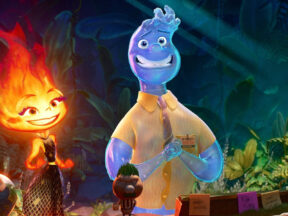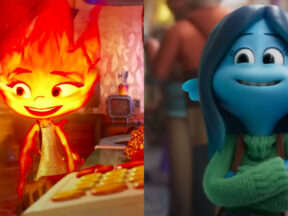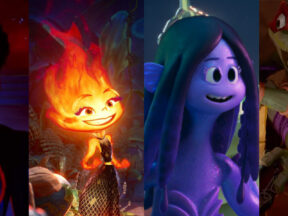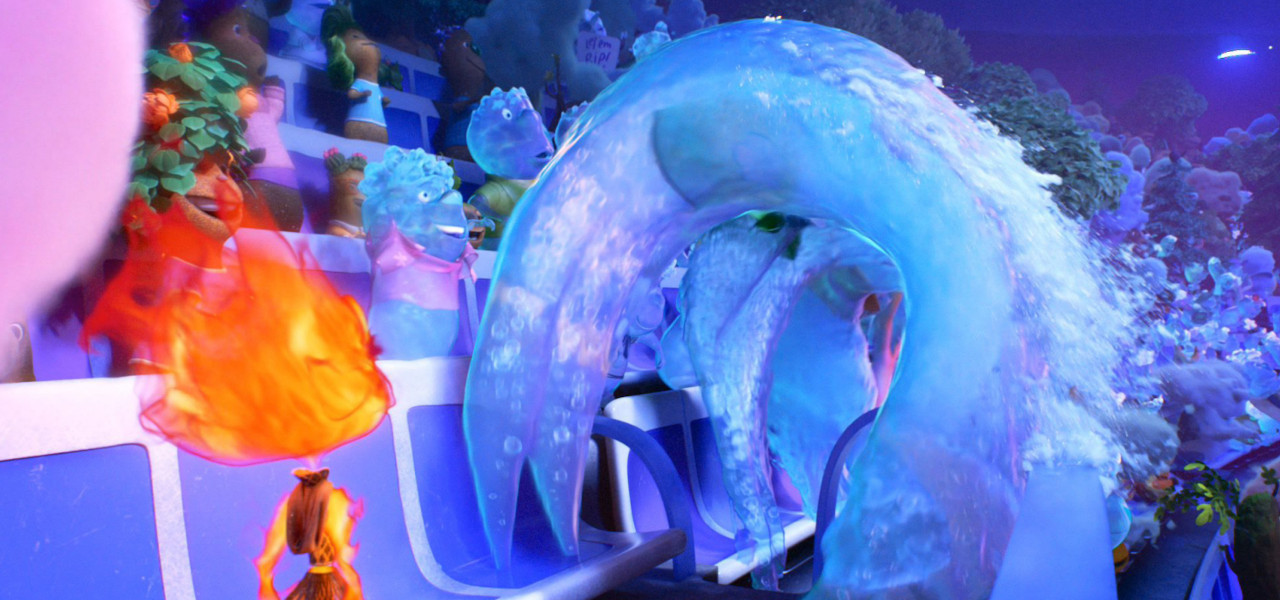
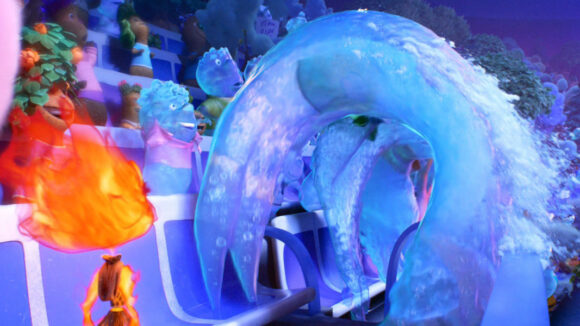
Pixar Dives Into The Tech Behind ‘Elemental’ In Newly Published Papers
Pixar has published a series of papers detailing the tech behind Peter Sohn’s upcoming cg animated feature Elemental. The papers accompany talks that Pixar will be presenting at SIGGRAPH 2023 in L.A. this August.
Some of the documents deal with very specific aspects of software while others are more broad in their focus and discuss how Pixar was able to realize the aesthetic choices made by artists working on the film.
Characters
One of the standout features of Elemental is its vibrant characters. They move, morph, and glow differently than those from previous Pixar films. Importantly, they also do all those things very differently from one another, meaning that the production had different problems to solve for each of its character types.
Several of the papers are dedicated specifically to character animation, including:
Creating Elemental Characters: From Sparks to Fire
- Abstract: Pixar has a long history of creating high-quality effects and characters that aid in the telling of wonderful stories. With Disney and Pixar’s Elemental, we have taken the next groundbreaking step in creating fully simulated, animated, and stylized characters. In this talk, we will present the framework and process that we use to create Fire characters.
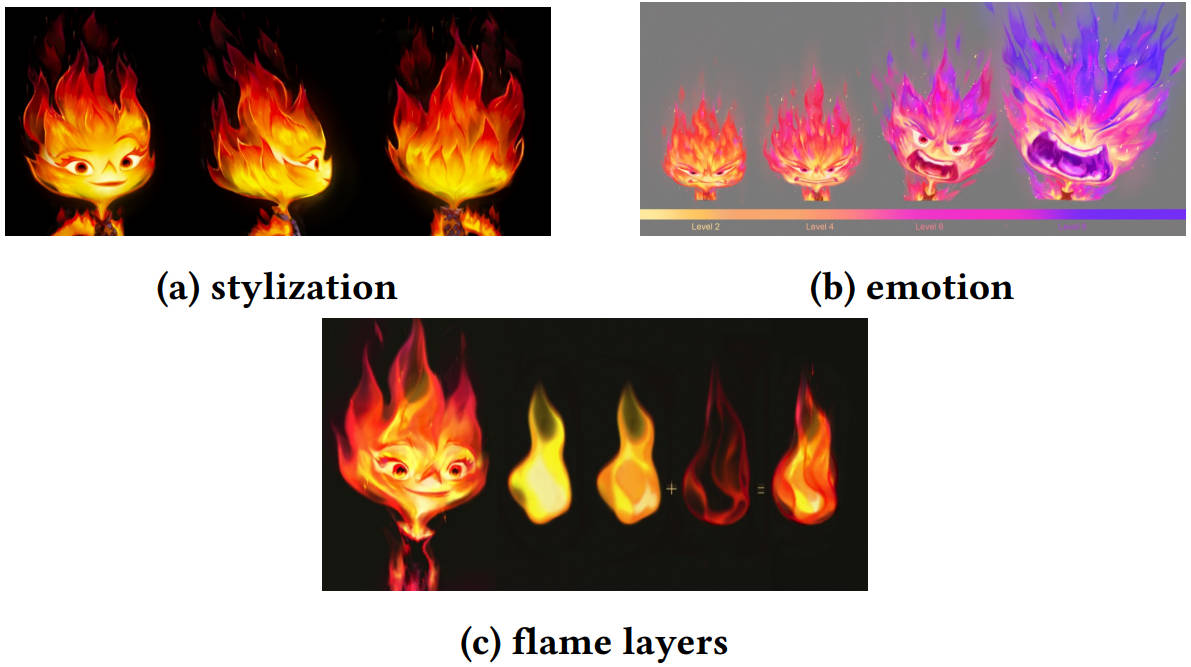
Elemental Characters: Bringing Water to Life
- Abstract: In Pixar’s Elemental, the water characters of Element City are not drenched in water, but made of the element itself. Our goal was to create characters that felt non-human and of water, yet still maintain design, readability, and charm. Starting with the concept art (inset) and at every step of the modeling, rigging, simulation, shading, effects, and lighting for the water characters, we balanced the characteristics of water with the more traditional goals of character design: water’s evolving shapes and dynamism with iconography and clean silhouettes; its complex light interactions with a focus on the emotion of the acting and readability of features.

Elemental Characters: Making Characters Out of Thin Air
- Abstract: Elemental required many new technical solutions due to its ambitious visual language and storytelling. The film’s characters, made of different elements – fire, water, air, and earth, required a unique approach in finding answers. For our main Air characters, we had to come up with a solution to combine two methods, a procedural volume generation, and stylized simulated volume model. In addition, we had to find a solution for secondary Air Characters, to utilize where there was an overlap in developed techniques and where we had to diverge. In addition, we also had to resolve what type of data we had to create to allow shading to have full control over the look of the character.

Elemental Characters: The Living Vegetation of Element City
- Abstract: The Earth characters of Elemental feature a wide range of foliage adornments, ranging from bushes and small plants to trees that tower over their bodies. Creating appealing motion for each of the variations of these characters presented a unique challenge to the Simulation Team, and led to a significant expansion of the existing simulation pipeline. These characters needed to believably co-exist in a world with set-dressed foliage, while also interacting with the diverse and mechanically challenging environment of Element City. In order to meet the demands of a film featuring crowded mass transit, high levels of action, and trees that prune each other, a new series of tools were created to allow Pixar’s Simulation artists to apply the most powerful tools at our disposal to the most appropriate tasks.
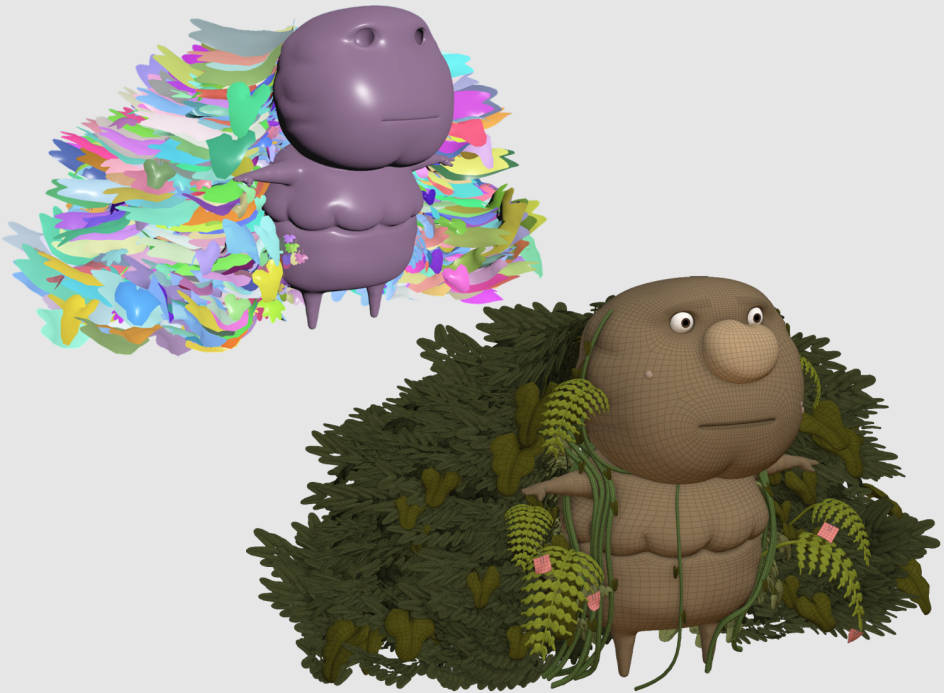
Worldbuilding
As unique as the film’s characters are, so too is the world they inhabit. The environment is inspired by New York City, where Sohn grew up. But for Element City to be believable, it needed to share some of the characteristics of its inhabitants.
Procedural Techniques for Large, Dynamic Sets in Elemental
- Abstract: The world of Elemental is inhabited by characters made of fire, water, air, and earth, and we needed to give these characters a home that was just as dynamic as they were. Specifically, we needed to build a city with new and distinct forms of architecture for each element, fill this city with fire, water, smoke, and vegetation, and add animation to make everything feel alive in the way a bustling city should. In this talk, we present our techniques for handling problems of scale, such as parameterized building generation and dressing, application of a variety of fx elements within large sets, as well as some novel approaches for automated color palette generation, both in an asset and shot context.
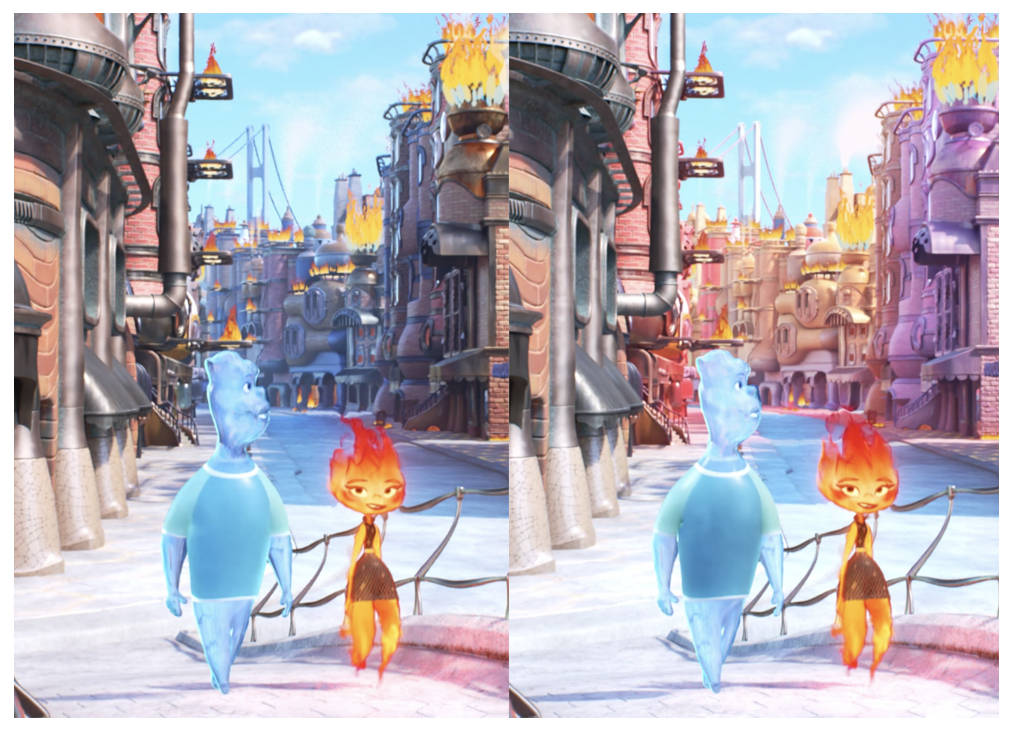
as an asset. The right represents local color overrides using
spatial modifiers. ©Pixar
Other papers published by Pixar touch on subjects including the company’s denoising technology (PDF), volume rendering (PDF), the procedural pipeline created for Elemental (PDF), and an especially charming piece on the procedural approach for stylized bark shading ( PDF).
All the papers which are currently available can be found here.

